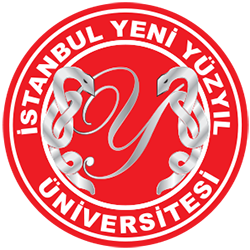| dc.contributor.author | Kuran, S.B. | |
| dc.contributor.author | Iplik, E.S. | |
| dc.contributor.author | Cakmakoglu, B. | |
| dc.contributor.author | Kahraman, O.T. | |
| dc.contributor.author | Iyibozkurt, A.C. | |
| dc.contributor.author | Koc, A. | |
| dc.contributor.author | Ergen, A. | |
| dc.contributor.author | Yilmaz, S.G. | |
| dc.contributor.author | Isbir, T. | |
| dc.date.accessioned | 2021-12-21T08:41:10Z | |
| dc.date.available | 2021-12-21T08:41:10Z | |
| dc.date.issued | 2018 | |
| dc.identifier.issn | 1455680 | |
| dc.identifier.uri | https://doi.org/10.14715/cmb/2018.64.4.13 | |
| dc.identifier.uri | http://dspace.yeniyuzyil.edu.tr:8080/xmlui/handle/20.500.12629/1342 | |
| dc.description.abstract | Reactive oxygen species (ROS) have been shown to be responsible for inducing DNA damage leading to mutagenesis, carcinogenesis, and cell death if the capacity of the protective antioxidant system is impaired. Endometrial carcinoma is the primary cancer ty | |
| dc.language.iso | English | |
| dc.publisher | Cellular and Molecular Biology Association | |
| dc.title | Relation of MPO, MnSOD, NQO1 gene variants in endometrial carcinoma in the line of PCR-RFLP methods | |
| dc.type | Article | |
| dc.relation.journal | Cellular and Molecular Biology | |
| dc.identifier.issue | 4 | |
| dc.identifier.startpage | 78 | |
| dc.identifier.endpage | 82 | |
| dc.identifier.volume | 64 | |
| dc.identifier.doi | 10.14715/cmb/2018.64.4.13 | |
| dc.relation.issue | 4 | |
| dc.relation.volume | 64 | |














